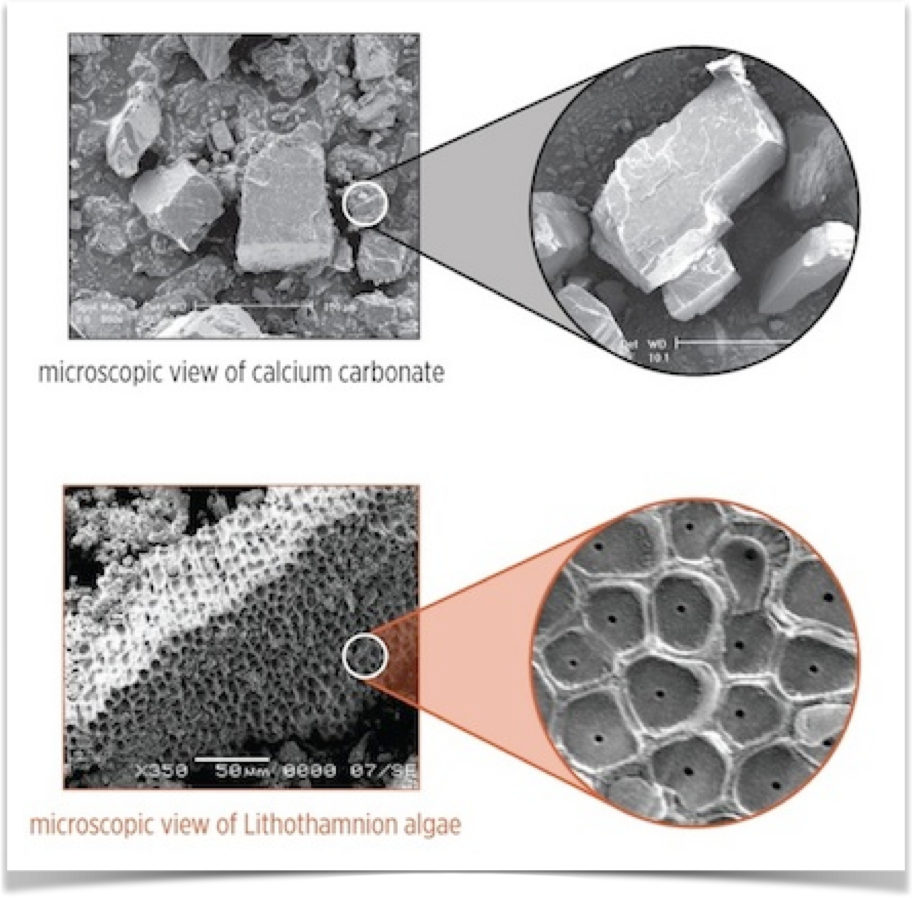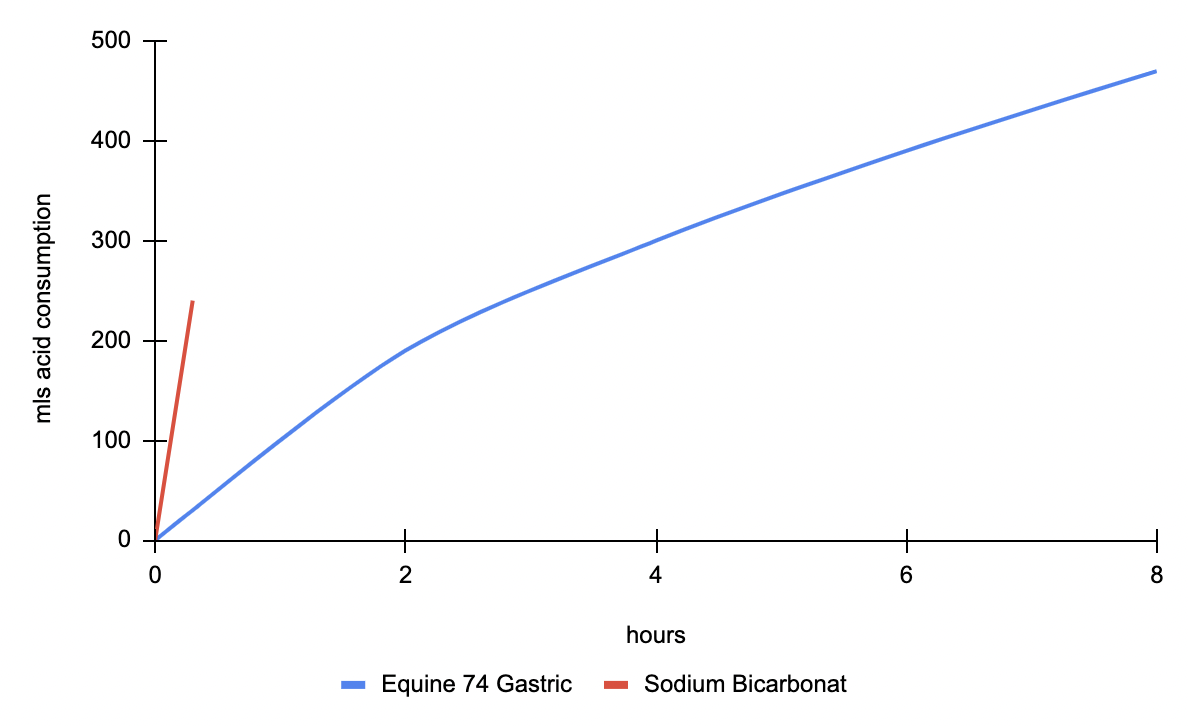The feeding of molasses in horses
1 min. read time
Audio version – listen to this article easily
Horses can develop stomach ulcers for a variety of reasons. The type of stabling, feeding, training or stress can have a great impact on their well-being. Horses have sensitive stomachs and need our support. Roughage in sufficient quantities, free movement, and a low-stress daily routine are just a few examples. In addition, you can feed your horse with a supplement like Equine 74 Gastric.
Is your horse prone to stomach problems or maybe has stomach ulcers? You've probably done lots of research on this topic, have read up on stomach health, and are now looking for the right product. Find out what makes Equine 74 Gastric so special!
Equine 74 Gastric is a supplement for horses and ponies which absorbs excess gastric acid caused by feeding and stress. It acts as a stomach acid buffer.
Here are the benefits of Equine 74 Gastric at a glance. Only interested in individual topics? Click directly on any topic:
Calcium carbonate belongs to the active substance group of acid-binding agents and helps to stabilise pH levels. However, the calcium's origins may vary. In the environment it occurs in bound form, e.g. from inorganic sources such as limestone, gypsum and chalk, or in minerals. Other manufacturers often use calcium carbonate as a calcium source because it is inexpensive. During the production process, numerous chemicals are used in a complex process to extract calcium carbonate.
No chemicals are needed to produce Equine 74 Gastric. Its red algae contain magnesium, calcium, and 72 other minerals. This is how we took the name "Equine 74 Gastric": The 74 minerals in red algae, plus Equine and Gastric – quite a simple solution. These minerals offer a further advantage over conventional calcium supplements as they provide additional support for the organism.
The calcium in Equine 74 Gastric has a unique, natural origin in the form of red algae. This marine plant with the scientific name Lithothamnium glaciale grows off the coast of Iceland and is also used in human nutrition. Reaction with gastric acid in the stomach breaks down the algae's calcium into its smallest atomic form, giving it high bioavailability for the equine organism. Bioavailability describes the proportion of an active ingredient that is absorbed by the body unchanged.
The main difference: not all red algae species are the same. The red algae species used in Equine 74 Gastric is particularly small, grows at a depth of about 30 m on a sandy seabed, and has the ability to bind minerals, especially calcium, from seawater. Since this algae grows only 1 mm per year, it has lots of time to store minerals. After the growth phase, the red-purple algae plants sink to the bottom of the oceans, leaving behind their calcified skeletal remains. These consist of about 30% calcium and can be harvested all year round.
The mineral composition of the red algae is influenced by the region in which it grows. Red algae are only found in a few locations worldwide, e.g. off the coast of New Zealand, France, and Iceland. Our harvest area is located in northern Iceland in one of the most pristine regions of the world's oceans. Conditions are quite strict, so authorities (agriculture and environment) are always present to observe and document the harvesting process. This lets us guarantee the origin of our red algae.
Samples are taken on board right after harvest, after drying on land, and before the milling and mixing processes. The finished products are regularly tested by independent, certified laboratories. Equine 74 Gastric meets food-grade quality standards as well as the highest production standards. Furthermore, only our partner company is allowed to harvest the red algae in Iceland. Only Equine 74 Gastric, with its special processing and composition, has a scientific study to back its claims. Other products containing red algae do not have this composition and are not produced through our special mixing and production process. Quality doesn't just happen.
The word algae makes many riders think immediately of high iodine levels. Iodine is present in seaweeds, and oversupply can happen. These types of algae grow from the sea bed to the surface, and therefore have a much higher amount of plant mass to filter the water. It is actually logical that they absorb more iodine.
Red algae, however, is different: a daily 50 g dose of Equine 74 Gastric contains 0.18 mg iodine, which does not affect the body's iodine levels. The daily requirement of a 600 kg horse is about 1 to 3 mg per day. Iodine is essential for horses, but only in small amounts, so that iodine requirements can be supplemented via mineral feeds.
Gastric acid has an important job in the organism. It is responsible for pre-digestion and the killing of germs and unwanted bacteria from feed. In horses, their continuous production of gastric acid poses a challenge. Horses evolved on the Eurasian steppes and were accustomed to a constant intake of roughage through forage. Today, this is not always possible because in many stables roughage is rationed. Extensive chewing of roughage stimulates saliva production so that the bicarbonate (which is contained in the saliva) and the gastric acid balance each other out. Stress, for example, can lead to increased acid production, resulting in excess acid in the horse's stomach.
Equine 74 Gastric is a stomach acid buffer, which means that it neutralises excess stomach acid. The excess acid can no longer attack the stomach lining, thus preventing the development of gastric ulcers. It also prevents the feed mash from being over-acidified when it enters the intestine. The result: A balanced gut flora so that the intestinal microbes can work better, which in turn leads to better feed conversion.
Due to its highly bioavailable calcium, this supplement has 2.5 times higher acid buffering capacity than products derived from limestone. It is influenced, among other things, by the red algae's honeycomb-like structure, as shown here.

This structure allows Equine 74 Gastric to absorb excess stomach acid like a sponge. The emphasis here is on "excess", because the natural function of gastric acid should not be influenced in any way; after all, the presence of gastric acid is essential for digestion.
This natural stomach acid buffering capacity along with a sophisticated milling and mixing process are what make Equine 74 Gastric special. The red algae's suitability for use in horse feed requires this special production process. Only Equine 74 Gastric has this unique blend.
Compared to a classic supplement with calcium bicarbonate (shown here in red), Equine 74 Gastric (shown here in blue) stays in the horse's stomach for a longer period. This means longer and more even buffering effects.

The scientists Moore*, O`Gorman and Wakefield* (*School of Agriculture, Royal Agricultural College, Cirencester, Gloucestershire, United Kingdom) examined the effect of Equine 74 Gastric in a scientific study in 2014. In an in vitro trial, Equine 74 Gastric was added to various feed rations in the presence of pepsin, HCL. Before the addition, different pH values prevailed. Measurements were taken after 1, 2, and 4 hours. After adding Equine 74 Gastric, it was found that in all cases the pH value increased, which suggests that the same happens in the horse's stomach, i.e., the stomach acid is buffered by Equine 74 Gastric. In addition, a buffering effect on small intestinal digestion and a slight stimulation of large intestinal digestion was observed. Read the full study here.
Equine 74 Gastric is available in two different varieties to meet the needs of a wide range of horses; both can be added to concentrates or mashes. The powder form is especially suitable for adding to mash. The pellets are intended for easy doers who don't tend to pick at their feed. They can also be used as treats to be given before or after work.
The pellets contain linseed oil to help in their production processes, the powder contains linseed meal as an equivalent. The mucilaginous substances and fibre in linseeds have positive effects on the digestive tract. When using oil in horse feed, it always comes down to quantity. Oil should only be fed in quantities of up to a maximum of 1 mg per kg of body mass per day so that small intestinal digestibility is not exceeded and the oils do not enter the large intestine. This is because they can have a negative effect on the cellulose-cleaving intestinal microbes and reducing fibre digestibility. The amounts contained in Equine 74 Gastric are safe and even beneficial for horses.
Live yeasts are special probiotics with benefits on health. They are subject to feed legislation and are classified as feed additives. Only one micro-organism is permitted for horses: the live yeast Saccharomyces cervisiae.
Live yeast has several different functions: It stabilises the natural microbiota in the large intestine, strengthens the immune system, and prevents digestive problems like faulty fermentation, diarrhoea, and watery stool. It is also involved in the breakdown of starches. Feeding your horse live yeast helps to improve the environment of anaerobic microorganisms and worsens that of aerobic microorganisms. This is particularly important for microorganisms that convert lactic acid and break down fibres in the horse's large intestine. Live yeasts stabilise the pH value in the large intestine, preventing acidosis.
Live yeasts are highly resistant to gastric acid, allowing them to unleash their digestion-promoting and immunity-boosting effects in the horse's gut. One quality characteristic is the CFU count (colony forming units), which refers to the number of active organisms. Equine 74 Gastric contains 6.0 x 10^11 CFU / kg.
The complete composition of Equine 74 Gastric can be found here.
Equine 74 Gastric contains no substances that violate the Equine Anti-Doping and Controlled Medication Regulations (ADMR) of the German Equestrian Federation (FN), FEI, and Jockey Club. Laboratory tests are carried out several times a year by the Institute of Biochemistry of the German Sport University Cologne.
You can view all this information again here in our explanatory video.
Equine 74 Gastric
Buffers the excess acid in the horse's stomach instead of blocking it.
Equine 74 Stomach Calm Relax
Supports the nervous horse stomach in stressful situations.